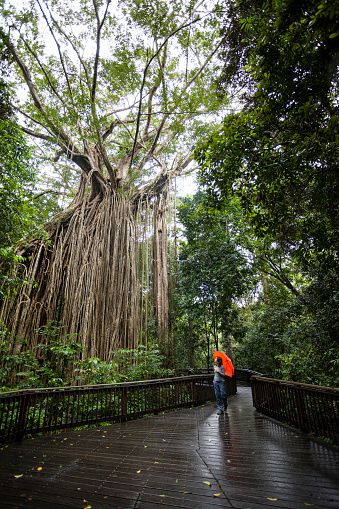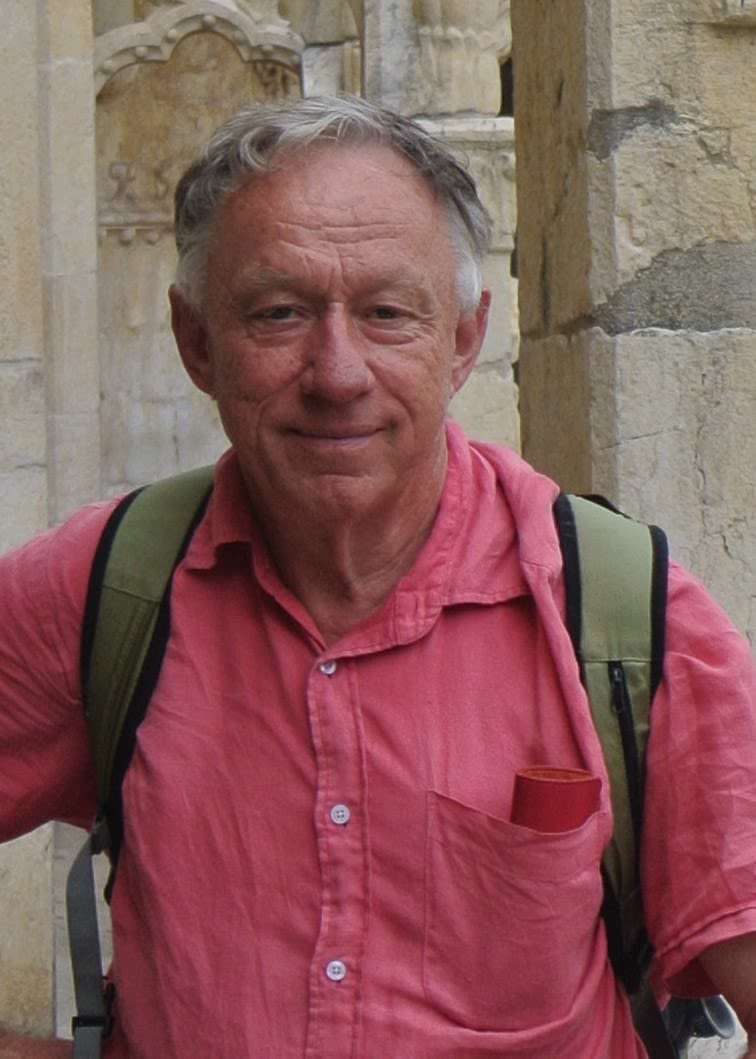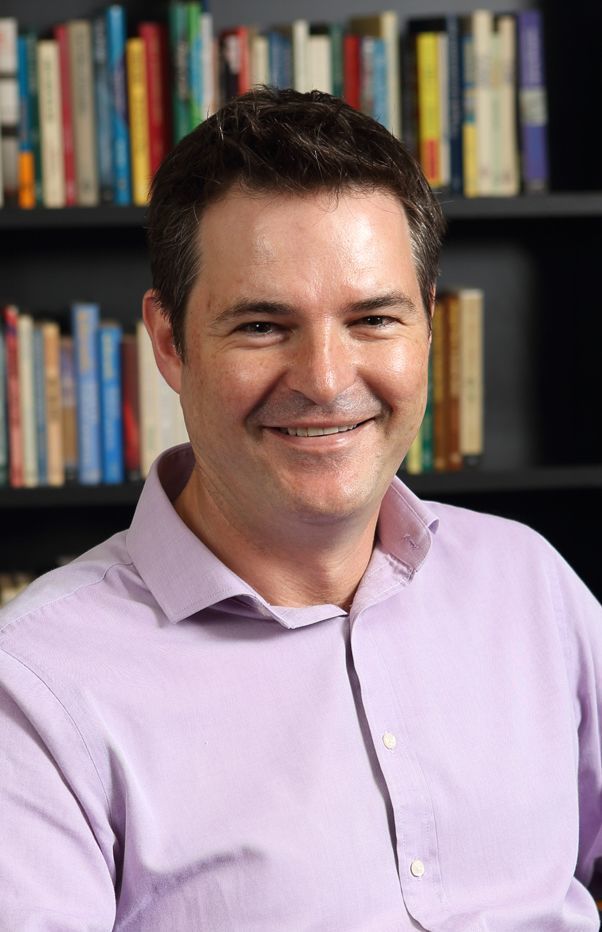Bringing Queensland’s history to life
A collection of public reference websites developed by UQ researchers is helping inform public policy and preserve priceless information about Queensland’s history, landscape, politics and culture for future generations.

“It is not worthwhile to try to keep history from repeating itself, for man’s character will always make the preventing of the repetitions impossible,” Mark Twain famously observed.
While it’s true humanity tends to forget the lessons of the past, almost everyone agrees knowledge of history is vital; that it’s inextricably linked with progress, culture and societal improvement.
However, making history relevant and accessible is a challenge – as seen in the efforts of two UQ historians to corral a diverse collection of Queensland historical sources and interpretations into an online collection that anyone can access.
Overseen by UQ's Emeritus Professor Peter Spearritt and Dr Geoff Ginn, the four websites – the Queensland Historical Atlas, Queensland Places, Queensland Speaks and Text Queensland – combine newly digitised 19th and 20th century materials with the latest research to create unique, interactive sources that can be used by researchers, teachers, students and the wider public.
During the past decade, their projects have captured or developed a vast collection of material on aspects of landscape, politics, history and culture in Queensland, and further afield.
The websites began as a project to help the Queensland Museum bring elements of their collection to life. This evolved to become the Queensland Historical Atlas, an interdisciplinary project made possible by a 2006 Australian Research Council Linkage Grant.
Unlike a traditional A to Z approach of an encyclopaedia, the Queensland Historical Atlas takes advantage of the power of modern search engines and focuses on presenting and contextualising stand-out content.
“We’ve brought objects and evidence to life in a way that encourages not only easy access, but a new cultural dimension through interpretive themes,” Dr Ginn says.
“By categorising the historical material into broad themes such as curiosity, pathways and transformation, we were able to make the content far more accessible,” he says.
Photo credit: Getty Images/Siegfried Schnepf

Feedback from users suggests Professor Spearritt and Dr Ginn have struck a historical sweet spot with their projects, now hosted by the UQ School of Historical and Philosophical Inquiry under the banner of ‘Digital Histories, Cultures and Landscapes’.
Journalists and researchers in community settings such as libraries, museums and local historical societies say the sites are extremely useful for cultural research and interpretation.
Popular topics include the Atlas’s entries about indentured labour in the sugar industry and the history of Queensland’s gold fields, which have received more than 63,000 and 44,000 hits respectively since 2011.
Another 17,000 hits were recorded for the entry on Queensland’s South Sea Islander community, a significantly under-researched aspect of Queensland’s community history.
Teachers and students are also benefiting from the Queensland Historical Atlas. After originally incorporating entries from the Atlas into its formal curriculum resources, Education Queensland now lists the Atlas as a recommended resource for teachers and a source of relevant, authoritative and accessible historical detail for use in class discussion, projects and assignments.
A similar approach was developed by Professor Spearritt through the Queensland Places project, which he began developing in 2005 in partnership with external collaborators.
Queensland Speaks, meanwhile, is a repository of oral history and biographical research that focuses on the politicians, public servants and officials who have helped shape Queensland since the 1960s.
According to one senior SLQ librarian, Queensland Speaks is a “wonderland of oral histories from key politicians and public servants over the last four decades”.
“This is the genius of the website – as one person’s experiences and perspectives are revealed, a greater historical and political context is painted.
“Queensland Speaks is an insightful, valuable resource that anyone with an interest in Queensland history should discover,” the librarian says.
Among the general community and wider public, family historians, tourism operators, and local and international visitors have also used the sites extensively.
Image credit: Getty Images/Joao Inacio

The historic Curtin Fig Tree in the Atherton Tablelands, Queensland.
The historic Curtin Fig Tree in the Atherton Tablelands, Queensland.
QUEENSLAND HISTORICAL ATLAS
qhatlas.com.au
This site groups the ways in which people interact with, understand and interpret the Queensland landscape into a range of cultural themes and concepts. The website draws on the research of more than 150 contributors, including research notes and peer-reviewed articles, overseen by an editorial board. It contains a range of historical maps, photos, and graphic images drawn from major cultural repositories, archives, art galleries, museums and private collections.
QUEENSLAND PLACES
queenslandplaces.com.au
At more than 500,000 words, with 13,000 images, this is the leading website on the places that make up Queensland and is used by more than a quarter of a million people a year, a fifth of them from overseas. The project has been expanded to include Victorian Places – a joint initiative of UQ and Monash University.
TEXT QUEENSLAND
textqueensland.com.au
This site brings together a wide variety of full-text, searchable, published and unpublished sources about the history and government of Queensland over the past 150 years, from scholarly books and periodicals to popular magazines and unpublished theses from all the universities in Queensland. Users can search with a wide variety of keywords, from the names of politicians, entrepreneurs and police commissioners, to schools, hospitals, retailers and many other businesses.
QUEENSLAND SPEAKS
queenslandspeaks.com.au
This unique oral history and biographical research project features interviews with the politicians, public servants and officials who, since the 1960s, have helped shape Queensland. The site has more than 100 interviews with former premiers, ministers and senior public servants, including former directors-general of key departments, offering new insights into decision-making processes in Queensland politics and government.
PNG SPEAKS
pngspeaks.com
PNG Speaks presents interviews with Papua New Guineans who were central to the country’s attainment of independence from Australia on 16 September 1975. The website is supported by the Papua New Guinea National Museum and Art Gallery, Deakin University, the Department of Foreign Affairs and Trade and UQ.
Image credit: Getty Images/Daniel Osterkamp

The story so far
2005: Early work starts on Queensland Places.
2006: A UQ team is awarded an ARC Linkage Project titled The Queensland Historical Atlas: Histories, Cultures, and Landscapes.
2007–2010: The Queensland Historical Atlas is developed and launched, overseen by UQ's Professor Spearritt, Dr Ginn and Dr Marion Stell.
2009: The Queensland Places website launches.
2011: The Queensland Speaks and Text Queensland websites launch.
2015: The Victorian Places website launches.
2015–2017: The PNG Speaks website launches.
Image credit: Getty Images/ Felix Cesare

Contact details

Professor Peter Spearitt
Professor Peter Spearitt
Professor Peter Spearritt, School of Historical and Philosophical Inquiry
Email: p.spearritt@uq.edu.au
Web: https://researchers.uq.edu.au/researcher/1075

Dr Geoff Ginn
Dr Geoff Ginn
Dr Geoff Ginn, School of Historical and Philosophical Inquiry
Email: g.ginn@uq.edu.au
Phone: +61 7 336 56407
Web: https://hapi.uq.edu.au/profile/416/geoff-ginn
This article was last updated on 27 March 2019.


